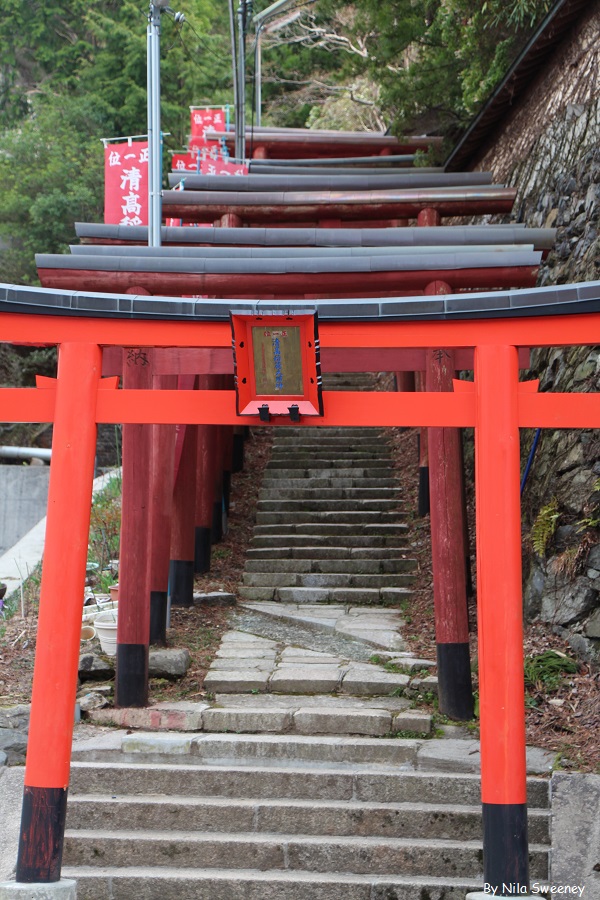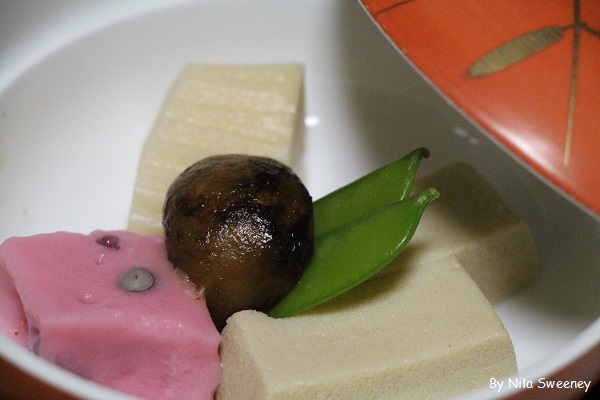Strange things happen when you travel to places like Mount Koya. If you don't watch out, you might just find serendipity in places you least expect.
By Nila Sweeney
 |
| A temple near Danjo Goran, Mount Koya |
What I didn’t expect was for my stay here to
eclipse the heady experiences I've already had with the cherry blossoms and
Mount Yoshino.
I thought things couldn't get any better. Well,
Koya San, you proved me wrong!
Even with a few false starts in the morning, such
as getting lost on my way down from the guest house because I thought I'd
follow a different route (Yup, I know, I never learn), arriving in Mount Koya
or Koya San made me instantly forget these niggly little things.
 |
| Temple near Okunoin |
The place has mystical written all over it. The crisp spring air was colder and the town seemed to move in slow motion.
Koya San is certainly special. It's been recognised by UNESCO as a World Heritage Area and is the centre of Buddhist study and practice. As such, Koya San features a lot of temples, with a few offering accommodation to guests who want to experience a bit of monastic life.
You can walk around to explore the town, which
seems to be the norm in Japan, although buses run regularly to take tourists
from one end of the town to the other. I arrived well before the shukubo or
Buddhist temple lodging opened for check in so I dropped my bags and started
exploring the place.
First stop was Danjo Goran, a big red temple, which
stood proudly in the middle of a large compound. A few of the monks were
bustling about, preparing the temples for a festival of some sort. Inside was a
different story altogether.
It was so quiet, you could hear a pin drop. The main hall featured a giant golden statue of the Buddha flanked by his disciples. The peaceful energy was palpable.
An elderly Japanese woman was praying quietly when
I walked. She smiled and showed me how to do the offering. I wasn’t sure if I
should, but I gave it a try anyway.
Perhaps the stillness of the place got to me, but I
felt a wave of calmness wash all over me as I sat quietly, taking in the
surrounding. I could feel my pulse and breathing slowing down considerably. It
was an unfamiliar sensation after having been running on adrenalin at full
speed.
Koya San does that to you. You just slow right
down. I actually found myself walking slower and speaking softer than normal
without even realising it.
I could have spent the whole afternoon there but I
knew I had a limited time to explore the area before I headed back to Tokyo the
next day. So I made my way to Dai Mon or Big Gate, featuring two fierce-looking
deities guarding the town. With the sun shining brightly, I thought I'd fit in
as many sights as possible.
Next stop was Okunoin, the most sacred
site in Koya San where more than 200,000 monks, lay people, prominent people
and royalties have been buried, some hundreds of years ago.
I've seen the photos, but seeing it in real life
was simply mind-blowing. The towering, centuries-old cedar trees sheltering the
tombs with the sun's rays peeking in between them created such a glorious sight.
The graveyard, Japan's largest, also featured hundreds of stupas,
some dating back several hundred years ago. Stupas are Buddhism’s sacred symbol
of enlightenment.
At the centre of the graveyard was the mausoleum of
Kobo Dashi, the founder of Shingon Buddhism in Japan, who is believed to be in
eternal meditation since 835 AD.
There was nothing morbid about the graveyard and I
found myself happily spending the whole afternoon exploring the 2km stretch.
The tranquillity of the place was infectious.
Without even noticing, I started thinking about my
own transient existence and how I’ve been living my life. It was one of those
moments when you’ve got nowhere to go but inside your head. It was confronting
but liberating at the same time. I realised I’ve squandered a large chunk of my
life living the way I did, but also joyful that I’m still alive to make things
right. The setting was perfect for these kinds of contemplations.
 |
| Okunoin, Japan's largest graveyard |
It was very tempting to stay longer, but it was starting to
get dark so I decided to return to the temple where I’d be spending the night.
I was warned by Lonely Planet that I should not be late for dinner which was to
be served at 6pm.
I arrived with plenty of time so I’ve decided to
try out the much-raved about Japanese bath. I was a bit nervous but relieved
that there was no one else when I got there. What followed was an
out-of-this-world experience.
 |
| Buddhist temple lodging or shukubo |
I didn't know what to expect, but the bath in this
temple was above what I’d consider top notch. Everything was perfect and oh, so
beautiful.
As I slowly slid into the large bath and felt the warm bubbling water on my skin, my brain just froze. I was totally lost in the moment. I lost the sense of time, place and self. The experience was so profound that I felt a sudden urge to cry and laugh at the same time. Perhaps I was just tired, but hey.
The bath left me feeling like a jelly when I
emerged, 30 minutes later. I felt so light and fresh, with no care in the
world. All the worries about work melted away. It was cleansing in more ways
than one. I felt like a new person, inside and out.
As I staggered out of the bathing area and into my
room, a monk asked if I wanted dinner served to which I said yes please. Within
a couple of minutes, he came bearing not one, not two, but three trays of
neatly presented traditional Buddhist feast!
I was almost reluctant to eat them. They looked too
perfect to touch, let alone eat. So I spent at least 10 minutes admiring the
food and taking photos, as you would when presented with something this
exquisite.
 |
| Don't know where to start! |
 |
| Best food I had in Japan |
The food tasted as good as they looked. It's the
best food I’ve had in Japan so far. As I tucked into this marvellous feast, I
felt so much gratitude for the good fortune I have been given, to be here,
right now.
 |
| Perfection in every way |
I felt incredibly privileged to be able to
experience all these wonderful things.
Peace, it seems, had come to me, at
last.







No comments:
Post a Comment